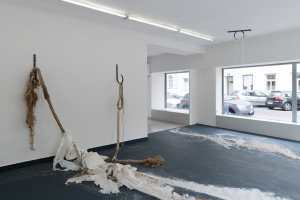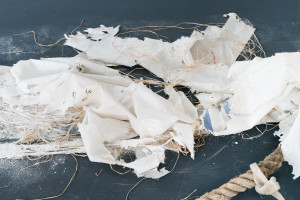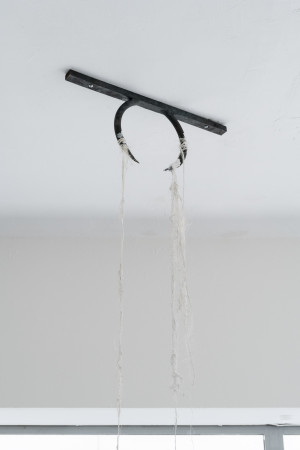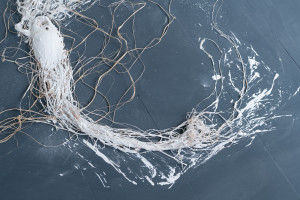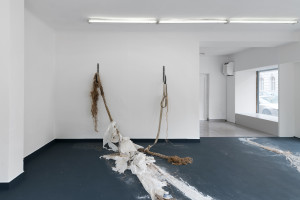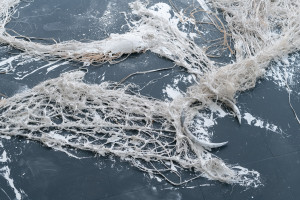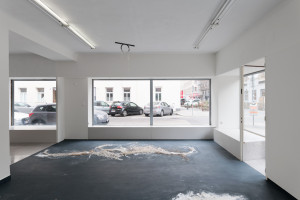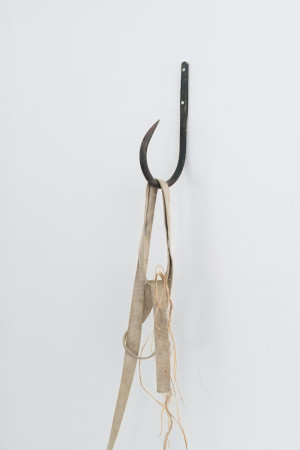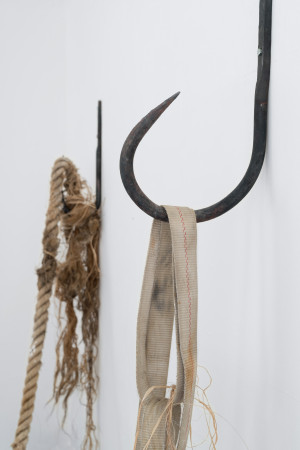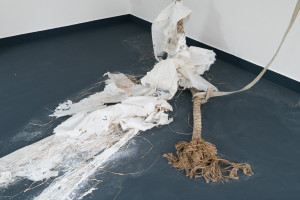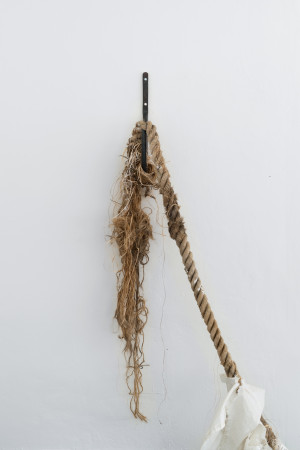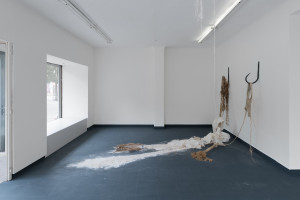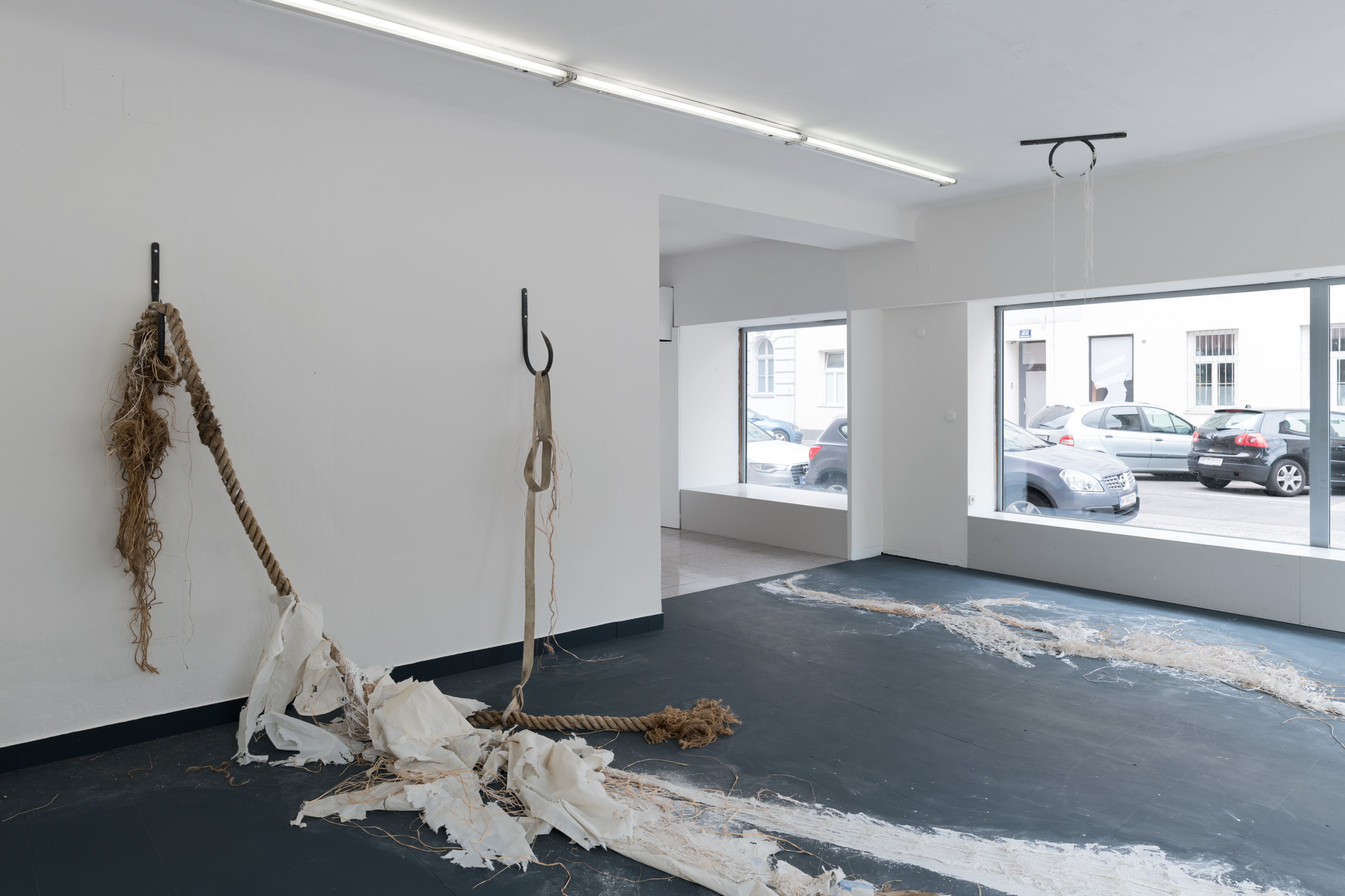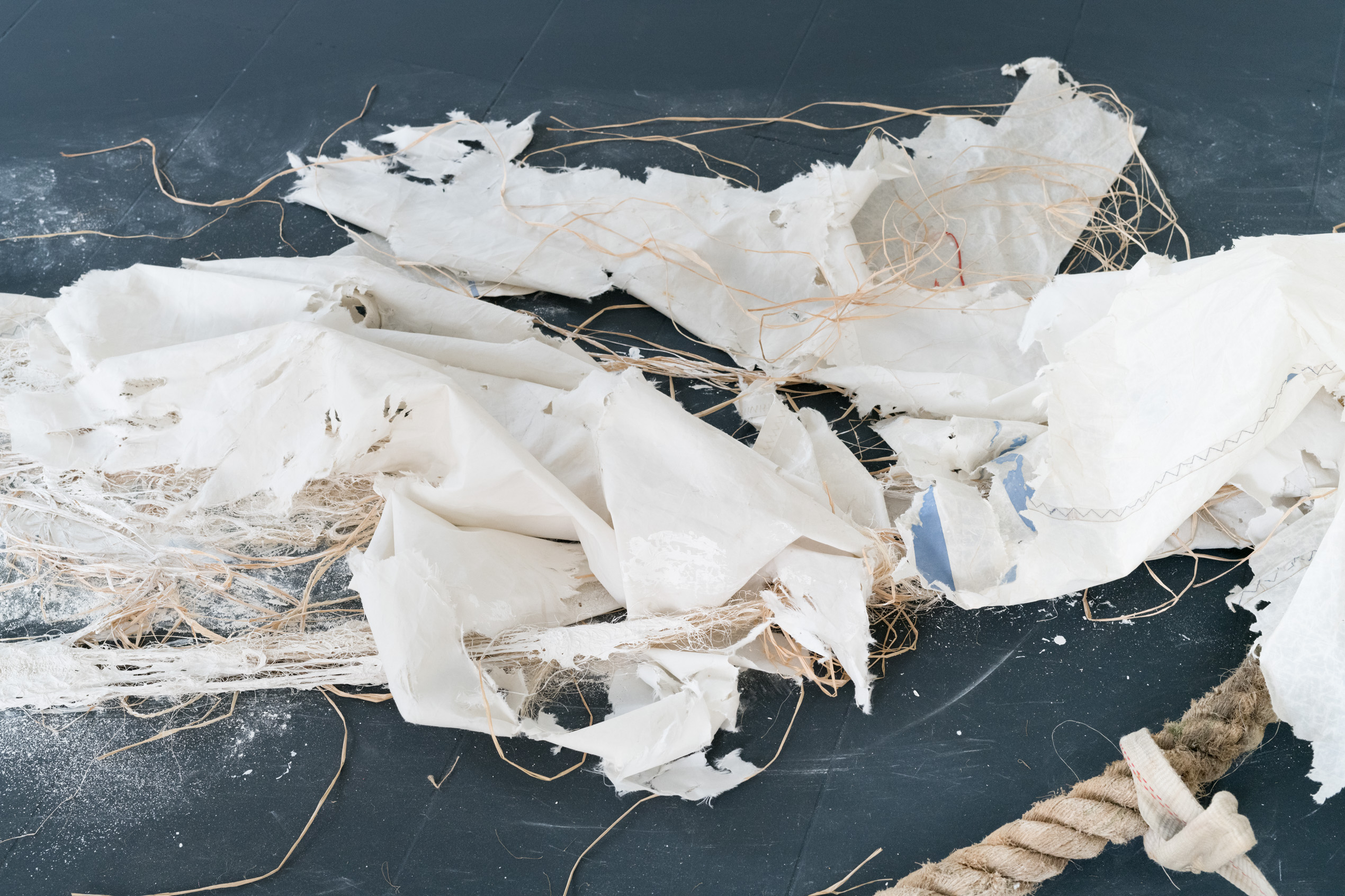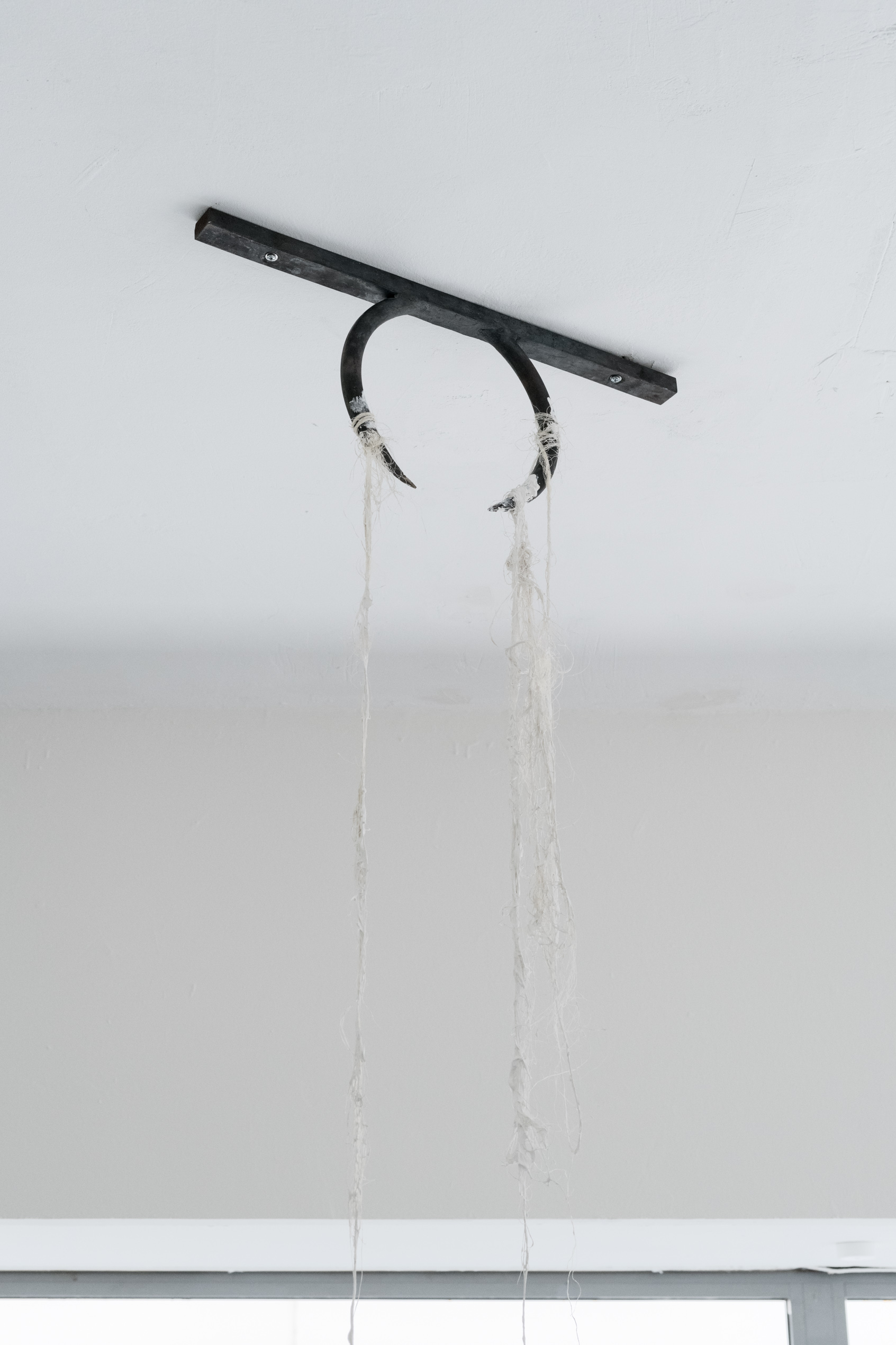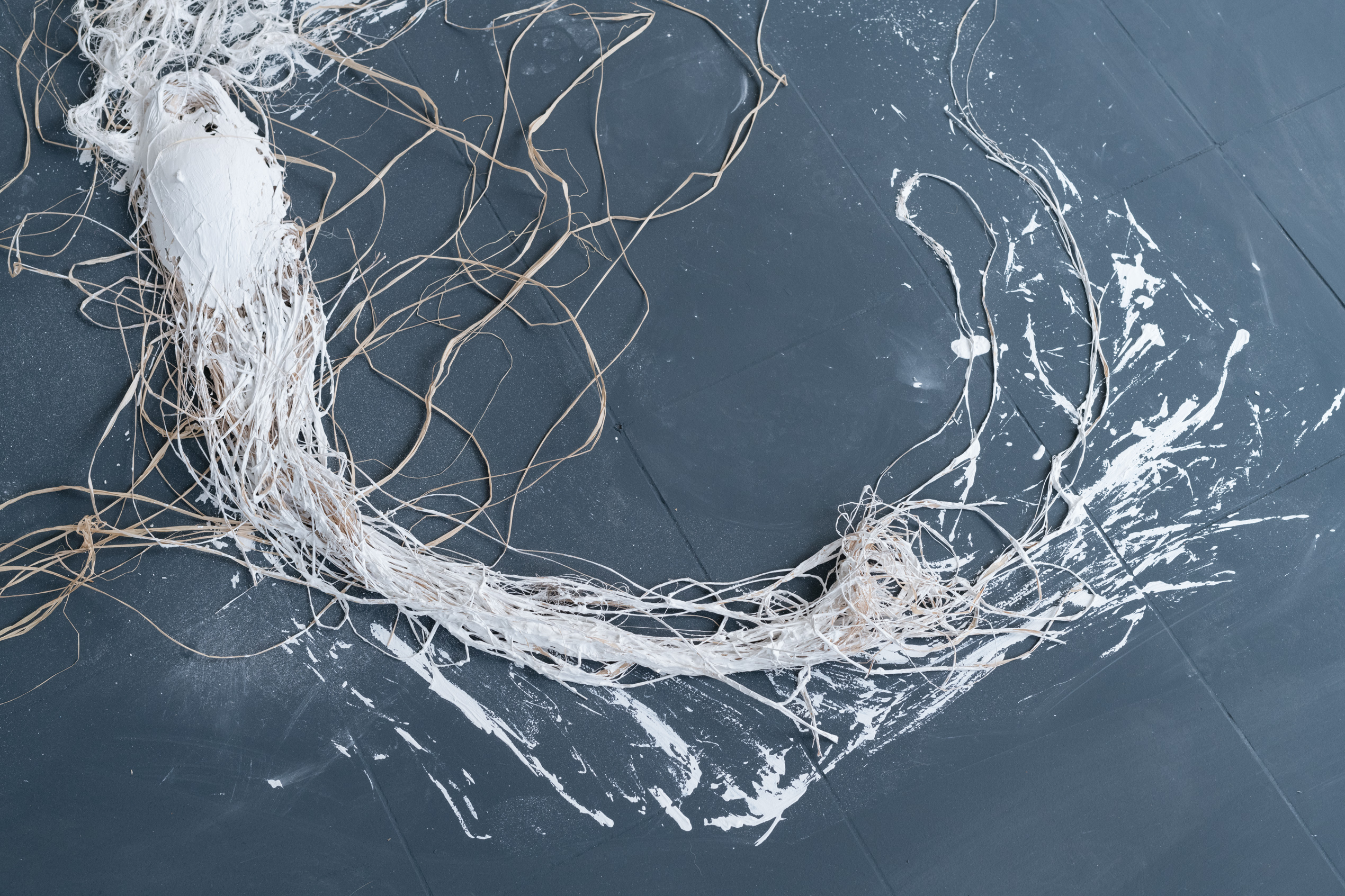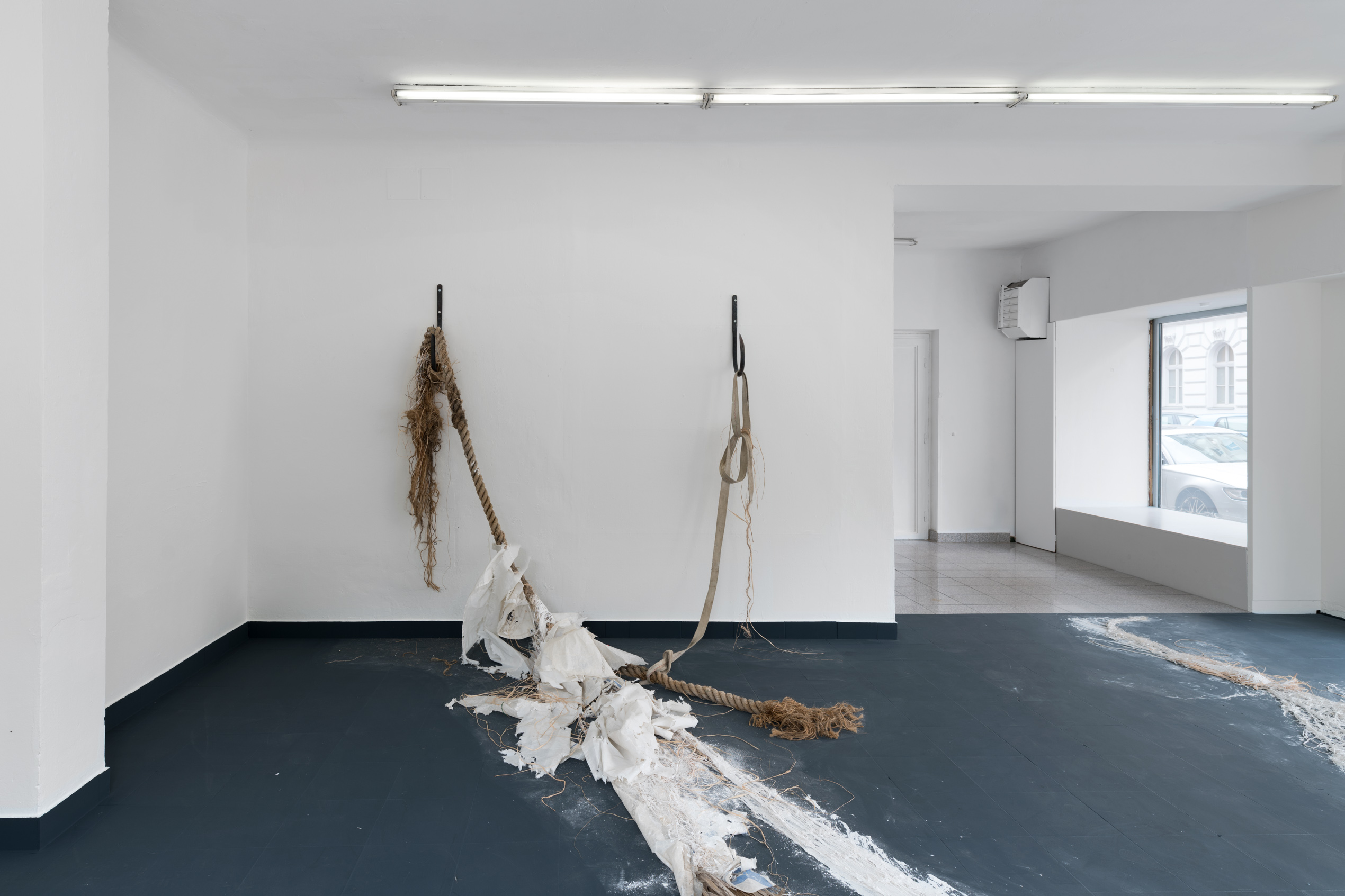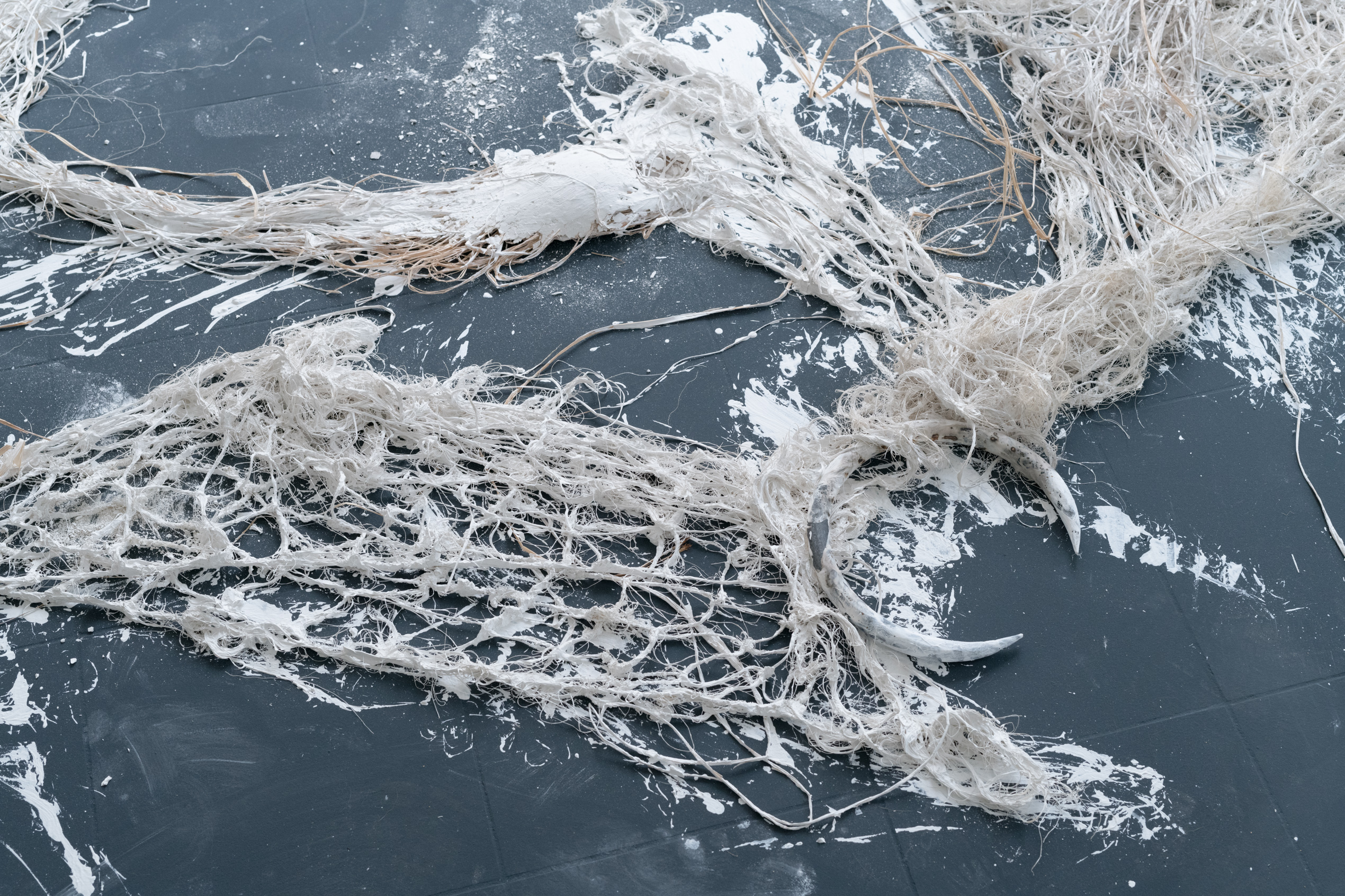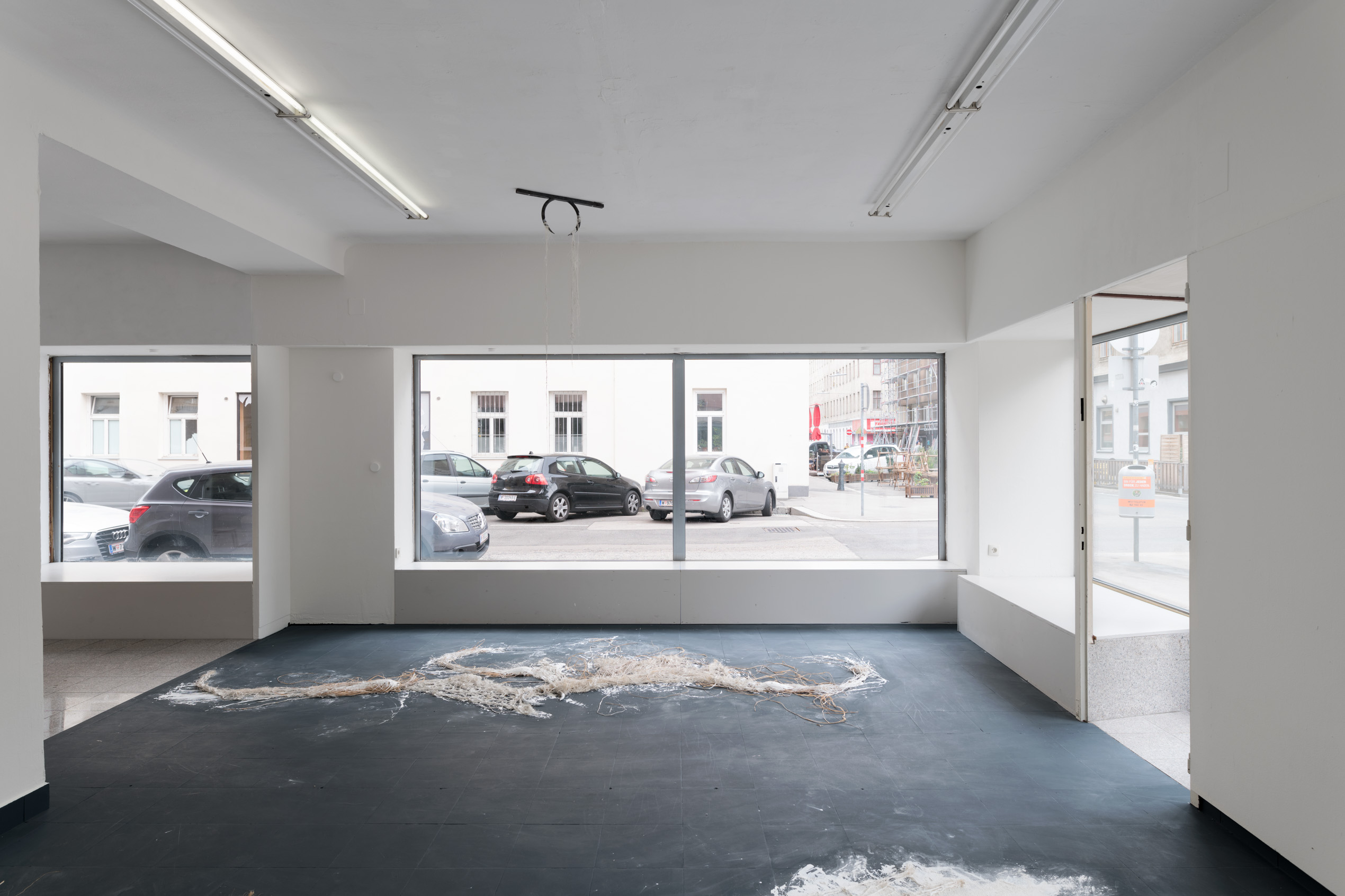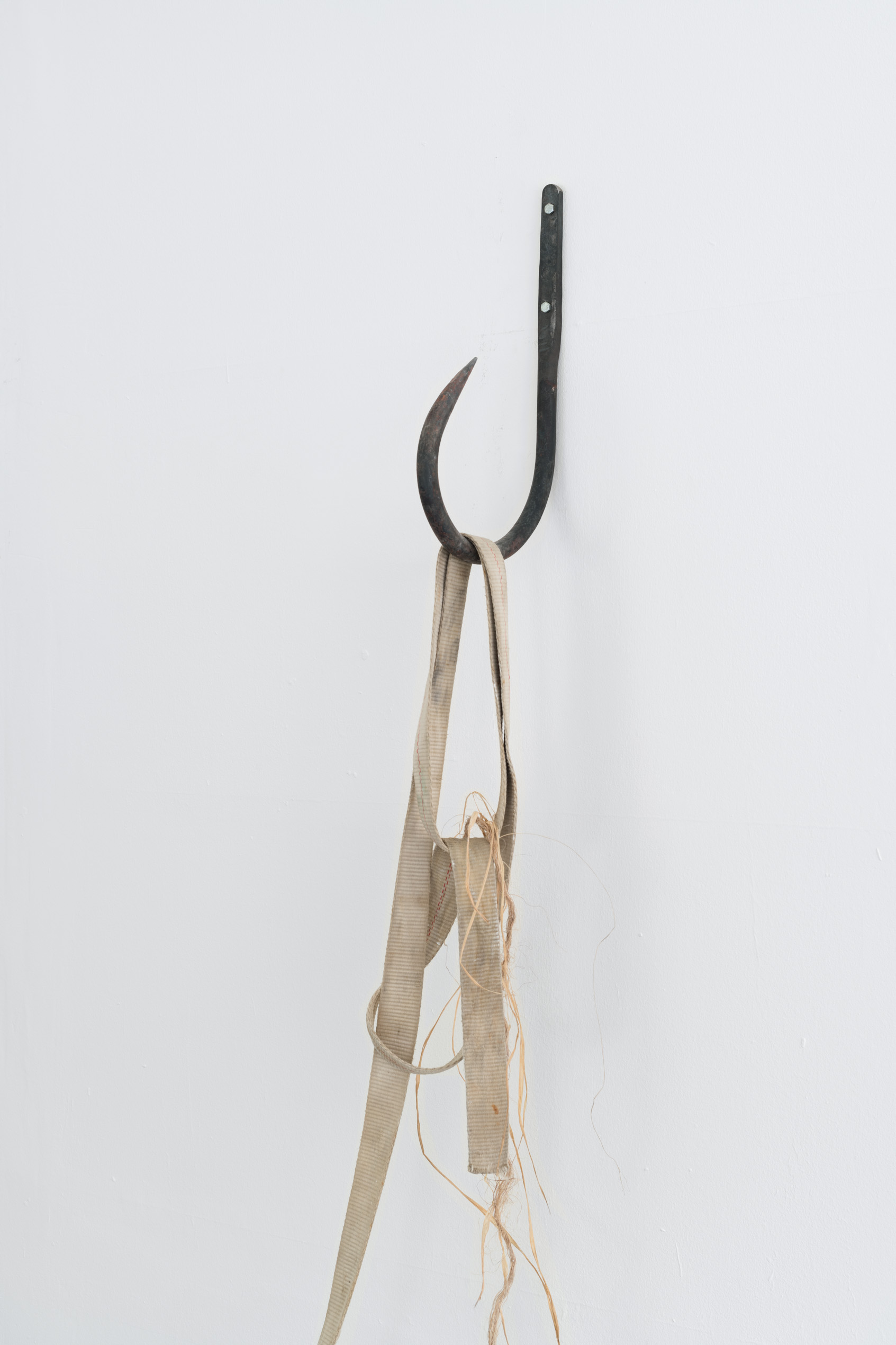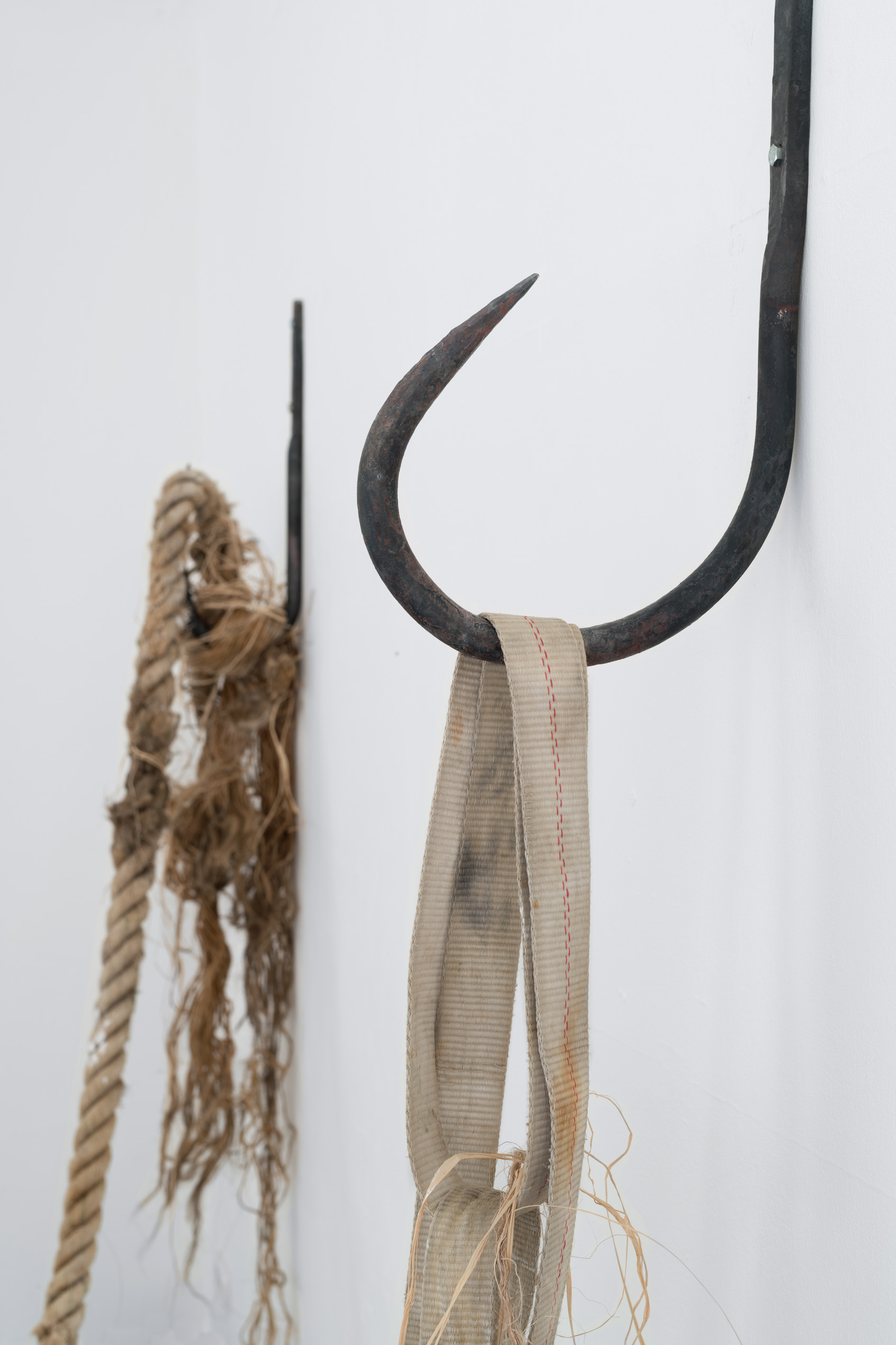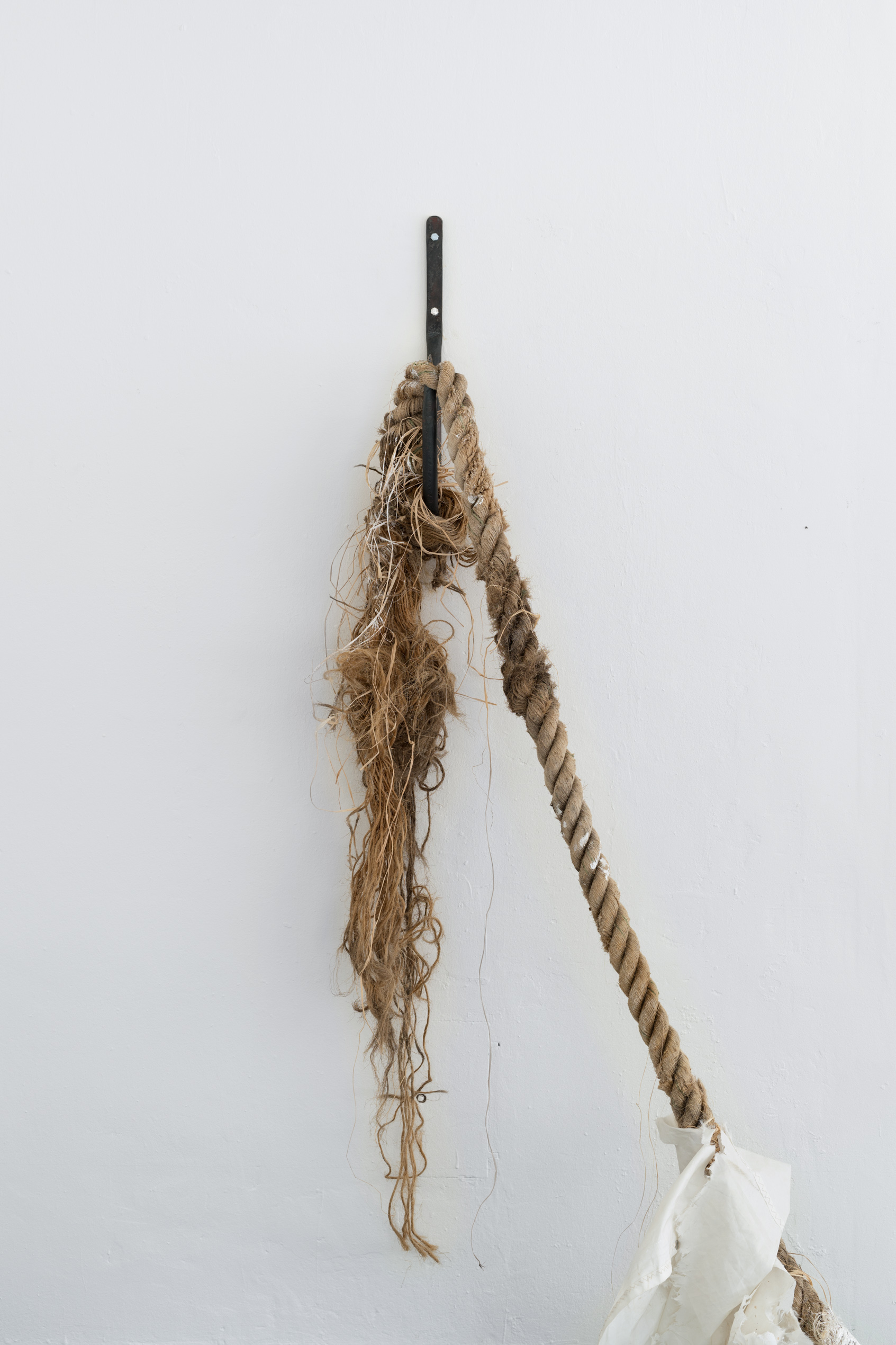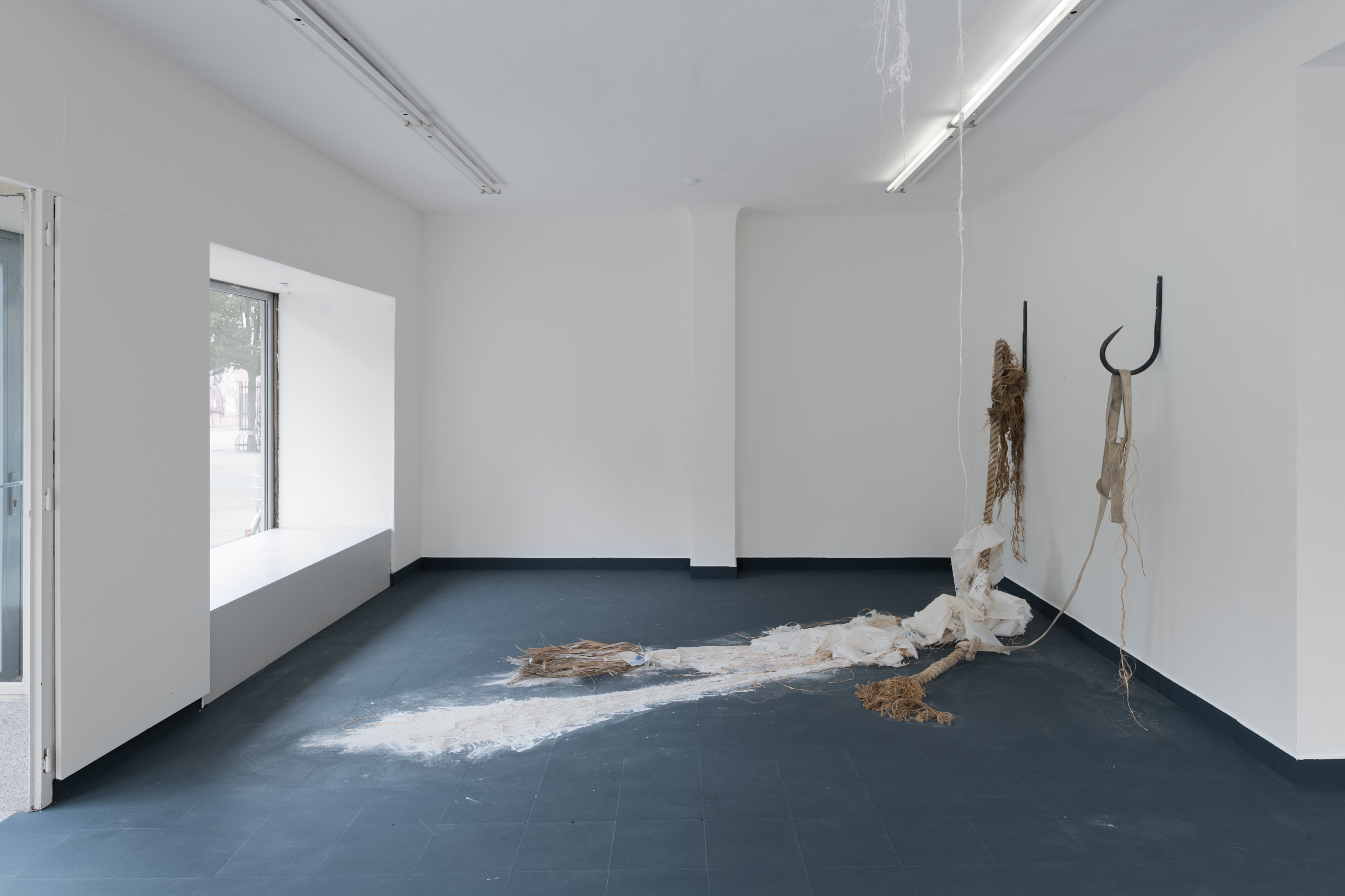But even if those Africans who were in the holds, who left something of their prior selves in those rooms as a trace to be discovered, and who passed through the doors of no return did not survive the holding and the sea, they, like us, are alive in hydrogen, in oxygen; in carbon, in phosphorous, and iron; in sodium and chlorine. This is what we know about those Africans thrown, jumped, dumped overboard in Middle Passage; they are with us still, in the time of the wake, known as residence time.
(Christina Sharpe, In the Wake. On Blackness and Being, 2016)
For her first solo exhibition in Austria, Abandon(ed) Vessel, Dominique White presents a new body of work that explores the histories and nautical myths of Black Diaspora interwoven with subaquatic afrofuturist and afropessimist narratives constructed by Detroit techno and Black Radical Thought.
White’s sculptural installations draw from beliefs surrounding the Kalunga line—a watery boundary between the world of the living and the dead in the Atlantic Ocean—, and investigate the Shipwrecked, redefined both as a reflexive verb as well as a state of being. Her works act as beacons pointing first to the Drexciyan (from the Detroit techno duo Drexciya) theory of an existence of an underwater civilization that is populated by drowned slaves thrown overboard during the Middle Passage, but also towards reimaginings of a Black Future on a dystopian Earth.
Conceived in July 2019 on the Italian island of Favignana, Ruttier for the Absent hung precariously as a beacon on the cusp of the Mediterranean Sea at Punta Marsala in the shadow of an abandoned lighthouse where the found materials—a sail, rope and dried palm fronds—had first been heavily mutilated by the artist, then destroyed by the force of the Mediterranean Sea. Translated into the white gallery space, the sculpture has now been manipulated by the artist with kaolin clay, a naturally occurring white clay often found on sculptures from Central and Western Africa as an act of cleansing and protecting the work from the exhibition space. Delicately balancing the states of preservation, decay and renItalic textewal, the sculpture is held by two massive iron hooks reminiscent of mutilated anchors or meat hooks. Whilst seemingly permanent and violent in their nature, these metal components lack any kind of patina and are thus left exposed to an unknown rate of decay.
The floorpiece Sargasso: An Ode to those who are yet to find their way Home borrows its title from the Sargasso Sea, often described as an oceanic desert largely devoid of tangible life forms due to the free-floating sargassum (a common seaweed found in the Sargasso Sea) forming a black void beneath its tightly bound surface. Geographically situated in the heart of the Bermuda triangle in the North Atlantic, the Sargasso Sea remains the only sea without a land boundary in the world and is often associated with the historical myth of being a dangerous area where “dead ships, dead sailors and dead slaves” (Brand 2001) were wrecked and mired in its throes for eternity, unable to escape. Echoing the long stretches of seaweed in this area, the sculpture consists of two iron hooks and an increasing number of clay buoys (or lost souls) consumed by a mass of meticulously hand woven nets—the mind-numbing and repetitive movements of their making evoking the consumption of mourning. The sculpture is conceived as an ongoing work in progress intended to grow larger over an undisclosed amount of time.
Understanding the sea as a powerful body to reveal elements of humanity’s existence—a shipwreck from slavery or relics of a settlement consumed by a natural disaster—, the artist’s sculptural installations recall dystopian remnants of an ignored or forgotten civilization existing outside of linear time. Rather than situating Black futurity in outer space (as suggested by Afrofuturist thinkers such as Sun Ra), the visual vocabulary of White’s work imagines the sea as a new world in which abstract futures may find a tangible space: a space in which Blackness functions as both the destructor and inheritor of this world, and self-destruction, decay and wilful absence become a powerful means of escaping the social or inherited death of the perceived Black body.
Dominique White (b. 1993, UK) lives and works in London. Solo exhibitions and presentations include Fugitive of State(less), VEDA (Florence, 2019) and Art-O-Rama (Marseille, 2019). Her works have been presented in group exhibitions such as Flood-tide at Love Unlimited (Glasgow, 2018); The Share of Opulence; Doubled; Fractional at Sophie Tappeiner (Vienna, 2018); °c at Clearview.ltd (London, 2018); The Conch (April) at South London Gallery (London, 2018); and Signs | Beacons at Caustic Coastal (Manchester, 2018). White was artist-in-residence at Curva Blu in June and July 2019 and also in residence with the network Formerly Called at Wysing Arts Centre (UK) from March to September of 2018.

